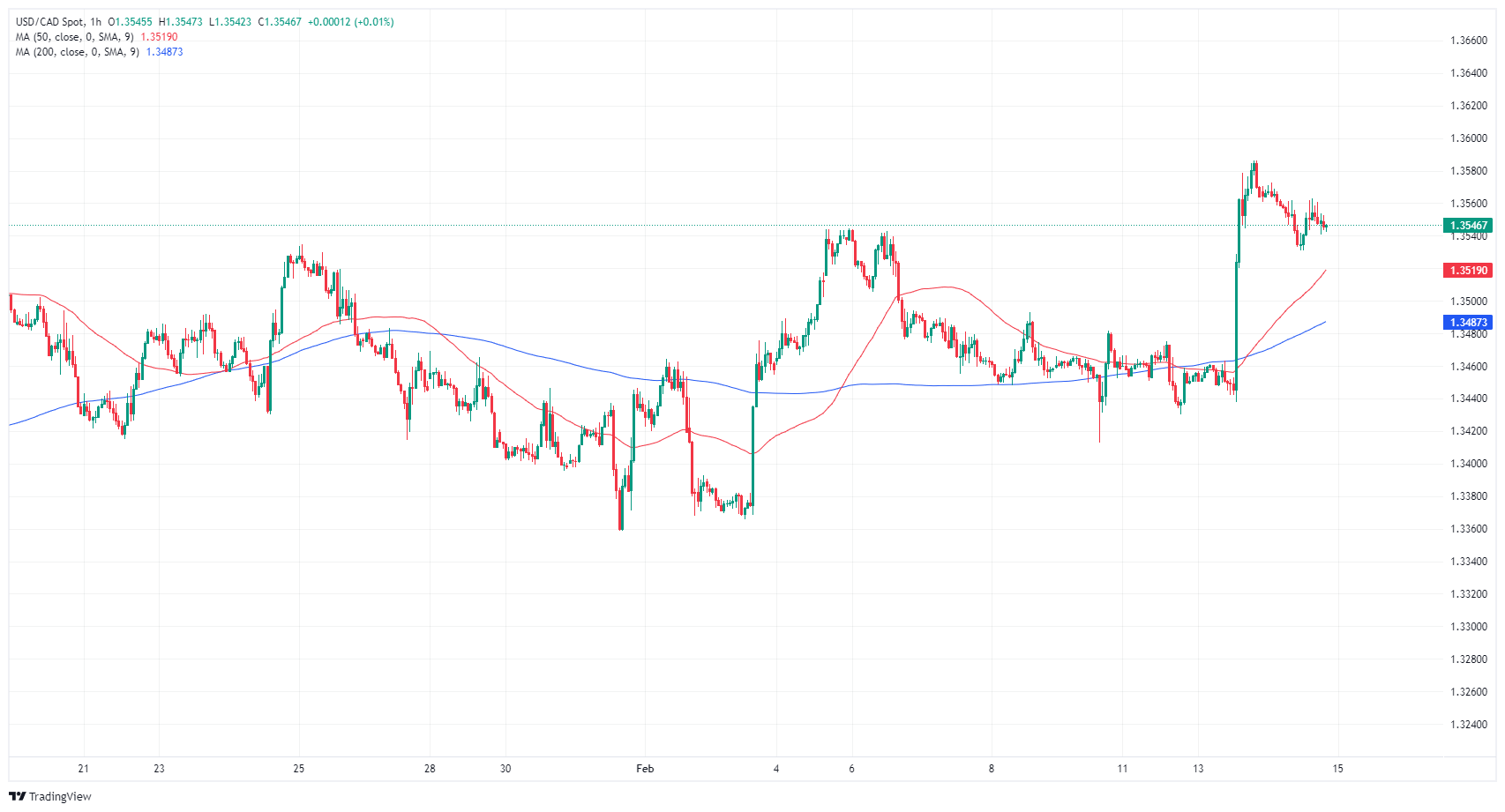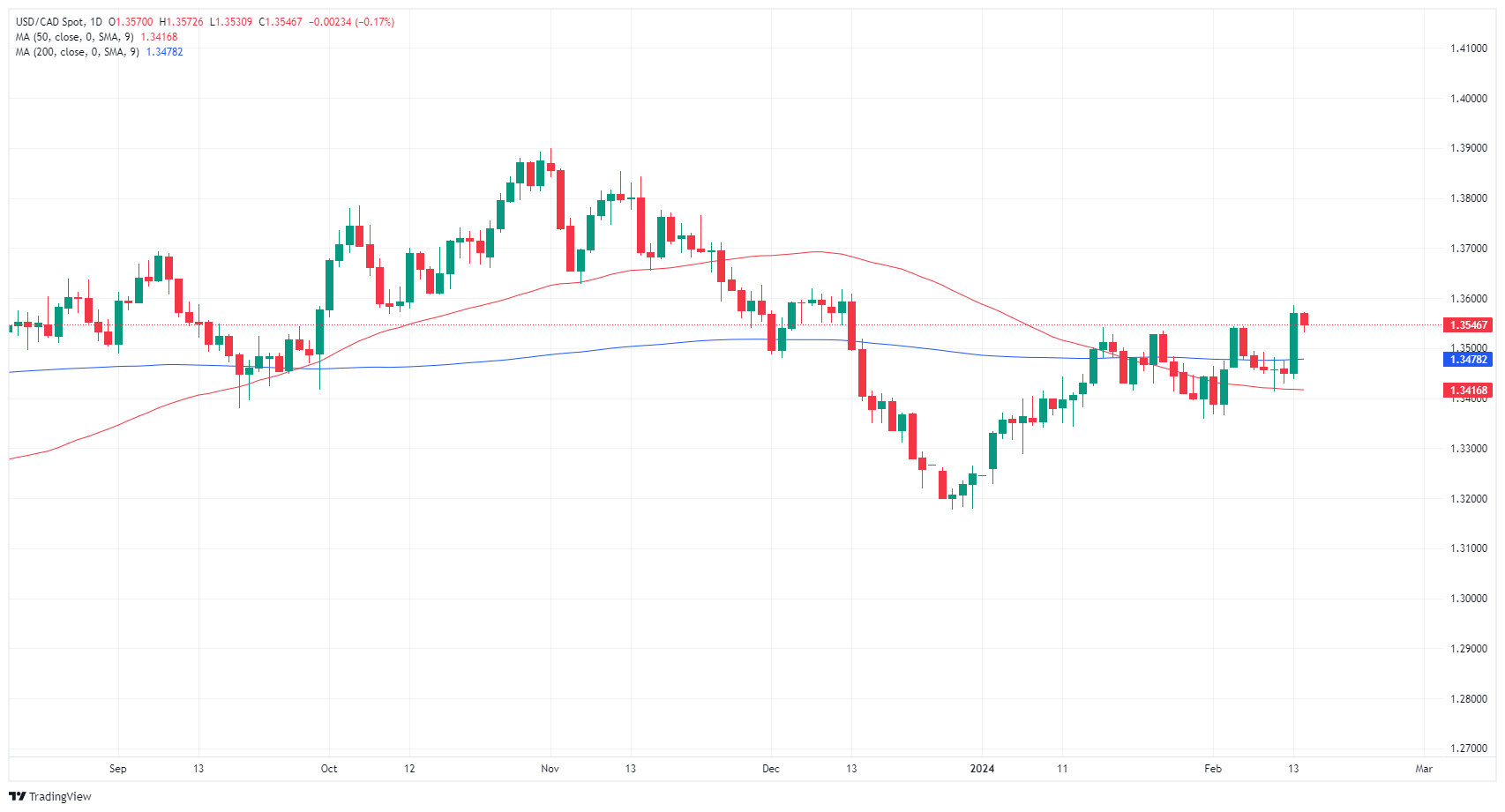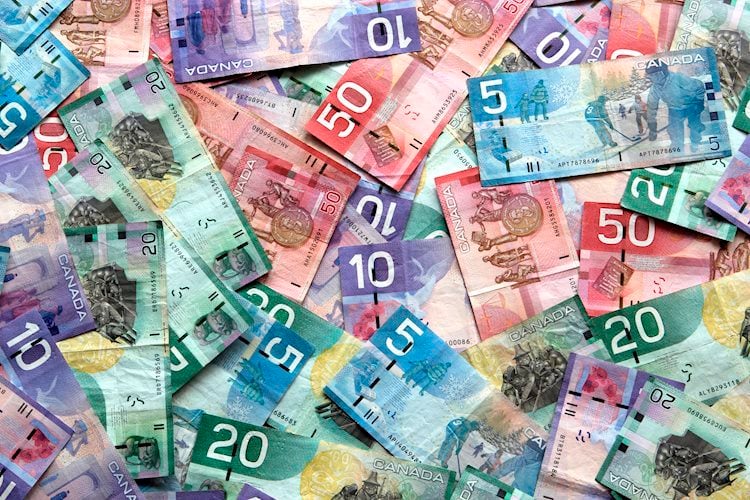- Canadian Dollar sees thin action in quiet midweek market.
- Canada brings strictly low-impact data for the rest of the week.
- CAD recovery supported by Crude Oil, but energy market hesitation limits gains.
The Canadian Dollar (CAD) churns on Wednesday as markets continue to digest Tuesday’s harsh shift in rate cut expectations after US inflation came in hotter than investors were hoping. Rate cut hopes have been pushed further out, propping up the US Dollar (USD) and keeping the Canadian Dollar pinned in the red by around three-quarters of a percent against the Greenback.
Canada sees low-tier economic data releases for the rest of the week, which are likely to be overshadowed by US data prints as investors find themselves at odds with the US economy. Rate cut hopes are pinned on US inflation cooling off at a much faster trajectory, as well as an overall decline in US economic health that has thus far failed to materialize.
Daily digest market movers: Canadian Dollar finds little momentum on quiet Wednesday
- The Canadian Dollar sees some sideways churn in the midweek after markets saw a sharp adjustment on the back of Tuesday’s US inflation figures.
- Crude Oil markets tested higher on Wednesday, helping to bolster the Loonie.
- Another surprise buildup in US Crude Oil stocks is weighing on barrel bids on Wednesday.
- The Energy Information Administration (EIA) reported over 12 million barrels of excess Crude Oil added to US supply lines for the week ended February 9.
- The barrel buildup adds to the American Petroleum Institute’s (API) 8.52 million barrel surplus reported on Tuesday for the same period.
- Canadian Housing Starts are forecast to increase slightly for the year through January on Thursday, expected to tick up to 235K from 249.3K.
- Markets to focus entirely on US Retail Sales on Thursday, January’s MoM figure forecast to soften to -0.1% versus December’s 0.6%.
- US Initial Jobless Claims for the week ended February 9 also are on the docket for Thursday, expected to show 220K new jobless benefits applicants versus the previous week’s 218K.
Canadian Dollar price today
The table below shows the percentage change of Canadian Dollar (CAD) against listed major currencies today. Canadian Dollar was the strongest against the Pound Sterling.
| USD | EUR | GBP | CAD | AUD | JPY | NZD | CHF | |
| USD | -0.17% | 0.23% | -0.15% | -0.60% | -0.10% | -0.45% | -0.21% | |
| EUR | 0.18% | 0.41% | 0.03% | -0.43% | 0.06% | -0.27% | -0.01% | |
| GBP | -0.24% | -0.41% | -0.39% | -0.83% | -0.34% | -0.68% | -0.44% | |
| CAD | 0.15% | -0.03% | 0.38% | -0.44% | 0.05% | -0.29% | -0.05% | |
| AUD | 0.58% | 0.42% | 0.82% | 0.44% | 0.48% | 0.16% | 0.40% | |
| JPY | 0.10% | -0.09% | 0.32% | -0.04% | -0.51% | -0.35% | -0.10% | |
| NZD | 0.45% | 0.26% | 0.68% | 0.30% | -0.15% | 0.34% | 0.27% | |
| CHF | 0.20% | 0.01% | 0.43% | 0.05% | -0.39% | 0.09% | -0.24% |
The heat map shows percentage changes of major currencies against each other. The base currency is picked from the left column, while the quote currency is picked from the top row. For example, if you pick the Euro from the left column and move along the horizontal line to the Japanese Yen, the percentage change displayed in the box will represent EUR (base)/JPY (quote).
Technical analysis: Canadian Dollar sees thin gains on Wednesday
The Canadian Dollar (CAD) is mixed to flat in Wednesday’s market action, seeing only scant gains against the US Dollar of around a sixth of a percent. The broader market bid the Australian Dollar (AUD) up four-tenths of a percent against the CAD, while the Loonie shed around a third of a percent against the New Zealand Dollar (NZD). The Canadian Dollar sees its strongest performance against the Pound Sterling (GBP), up around four-tenths of a percent on Wednesday.
USD/CAD found some friction near 1.3550 after Tuesday’s surge over the 1.3500 handle, but buyers are struggling to shove the pair back into the 1.3600 level. The pair remains bolstered above the 200-day Simple Moving Average (SMA) at 1.3478 with Wednesday’s tentative low etched in near 1.3530.
USD/CAD hourly chart
USD/CAD daily chart
Canadian Dollar FAQs
The key factors driving the Canadian Dollar (CAD) are the level of interest rates set by the Bank of Canada (BoC), the price of Oil, Canada’s largest export, the health of its economy, inflation and the Trade Balance, which is the difference between the value of Canada’s exports versus its imports. Other factors include market sentiment – whether investors are taking on more risky assets (risk-on) or seeking safe-havens (risk-off) – with risk-on being CAD-positive. As its largest trading partner, the health of the US economy is also a key factor influencing the Canadian Dollar.
The Bank of Canada (BoC) has a significant influence on the Canadian Dollar by setting the level of interest rates that banks can lend to one another. This influences the level of interest rates for everyone. The main goal of the BoC is to maintain inflation at 1-3% by adjusting interest rates up or down. Relatively higher interest rates tend to be positive for the CAD. The Bank of Canada can also use quantitative easing and tightening to influence credit conditions, with the former CAD-negative and the latter CAD-positive.
The price of Oil is a key factor impacting the value of the Canadian Dollar. Petroleum is Canada’s biggest export, so Oil price tends to have an immediate impact on the CAD value. Generally, if Oil price rises CAD also goes up, as aggregate demand for the currency increases. The opposite is the case if the price of Oil falls. Higher Oil prices also tend to result in a greater likelihood of a positive Trade Balance, which is also supportive of the CAD.
While inflation had always traditionally been thought of as a negative factor for a currency since it lowers the value of money, the opposite has actually been the case in modern times with the relaxation of cross-border capital controls. Higher inflation tends to lead central banks to put up interest rates which attracts more capital inflows from global investors seeking a lucrative place to keep their money. This increases demand for the local currency, which in Canada’s case is the Canadian Dollar.
Macroeconomic data releases gauge the health of the economy and can have an impact on the Canadian Dollar. Indicators such as GDP, Manufacturing and Services PMIs, employment, and consumer sentiment surveys can all influence the direction of the CAD. A strong economy is good for the Canadian Dollar. Not only does it attract more foreign investment but it may encourage the Bank of Canada to put up interest rates, leading to a stronger currency. If economic data is weak, however, the CAD is likely to fall.
